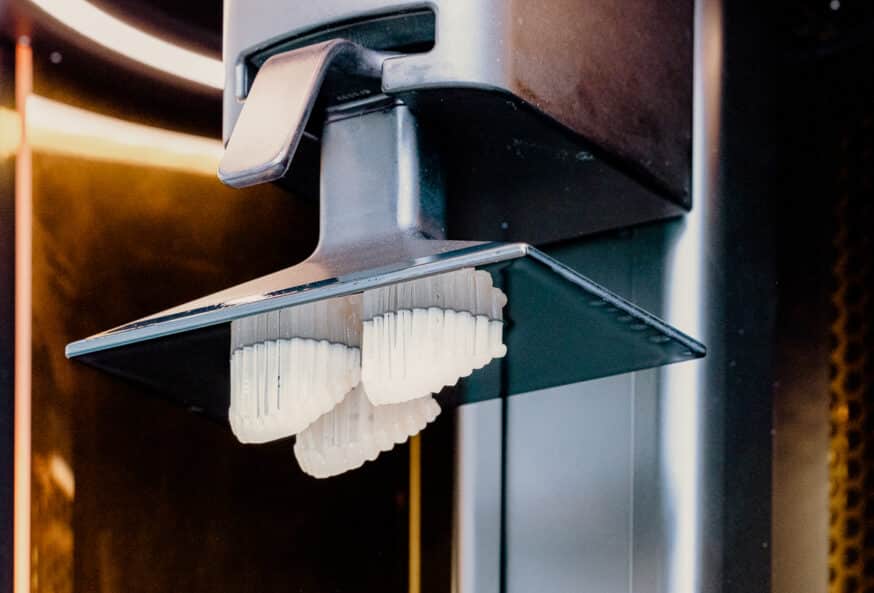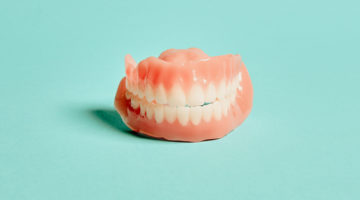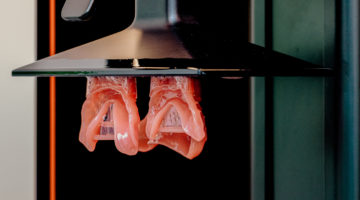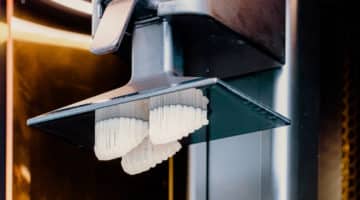People increasingly rely on complete or partial dentures for functionality and aesthetic features. According to census data, over 40 million people used dentures in 2022. The American College of Prosthodontists reported that 120 million people in the U.S. are missing at least one tooth, while 36 million Americans do not have any teeth at all.
The leading cause for using dentures, cited by the CDC, is gum disease. Untreated tooth decay, oral cancer, and chronic conditions also contribute to periodontal disease leading to tooth loss, dental implants, or dentures. Then there is the denture case resulting from mouth trauma.
Numbers are expected to increase over the next 20 years. The reason is attributed to the rising number of adults over 65, with 90 percent suffering from complete edentulism and needing dentures. Partial dentures will also increase to more than 200 million people, nearly a quarter of the U.S. population.
Dentists understand that dentures are the answer to improving dental health and providing maximum comfort while enhancing smiles. To compensate for the rise in dentures, doctors seek explanations for efficiency and workflow issues.
The solution? Digital Dentures.
What are digital dentures?
Digital Dentures are dental prosthetics that benefit from the evolution of digital dentistry technology, such as intraoral scanners, chairside software, and other digital tools. Dental technology transforms dental offices into competitive tech-savvy practices producing excellent patient experiences and effective results.
There are advantages of digital-designed dentures over traditional ones. The traditional dentures process can be laborious, time-consuming, and costly. Associated workflows require several appointments. Dental technology is a benefit to both the dentist and patients alike.
With digital technology, dentists can utilize intraoral scanners for a digital denture impression. Computer-aided design and computer-aided manufacturing technology (CAD/CAM) take the process into the next phase of the final set of Digital Dentures that are 3D printed.
Digitally designed dentures can be reprinted as a swift remedy to the loss of dentures by patients. The key is partnering with a state-of-the-art digital denture lab.
Depending on the manufacturing process, material, scanning, and laboratory quality, Digital Dentures fit in a scientifically proven way. An added edge to the advanced technology creates fast returns from the labs and quick remakes.
The entire process can take two or three appointments, depending on the type of dentures needed. To understand what Digital Dentures offer, let’s compare them to conventional complete dentures.
Digital dentures with Dandy
As your denture lab, you’ll be able to offer your patients 2-appointment dentures.
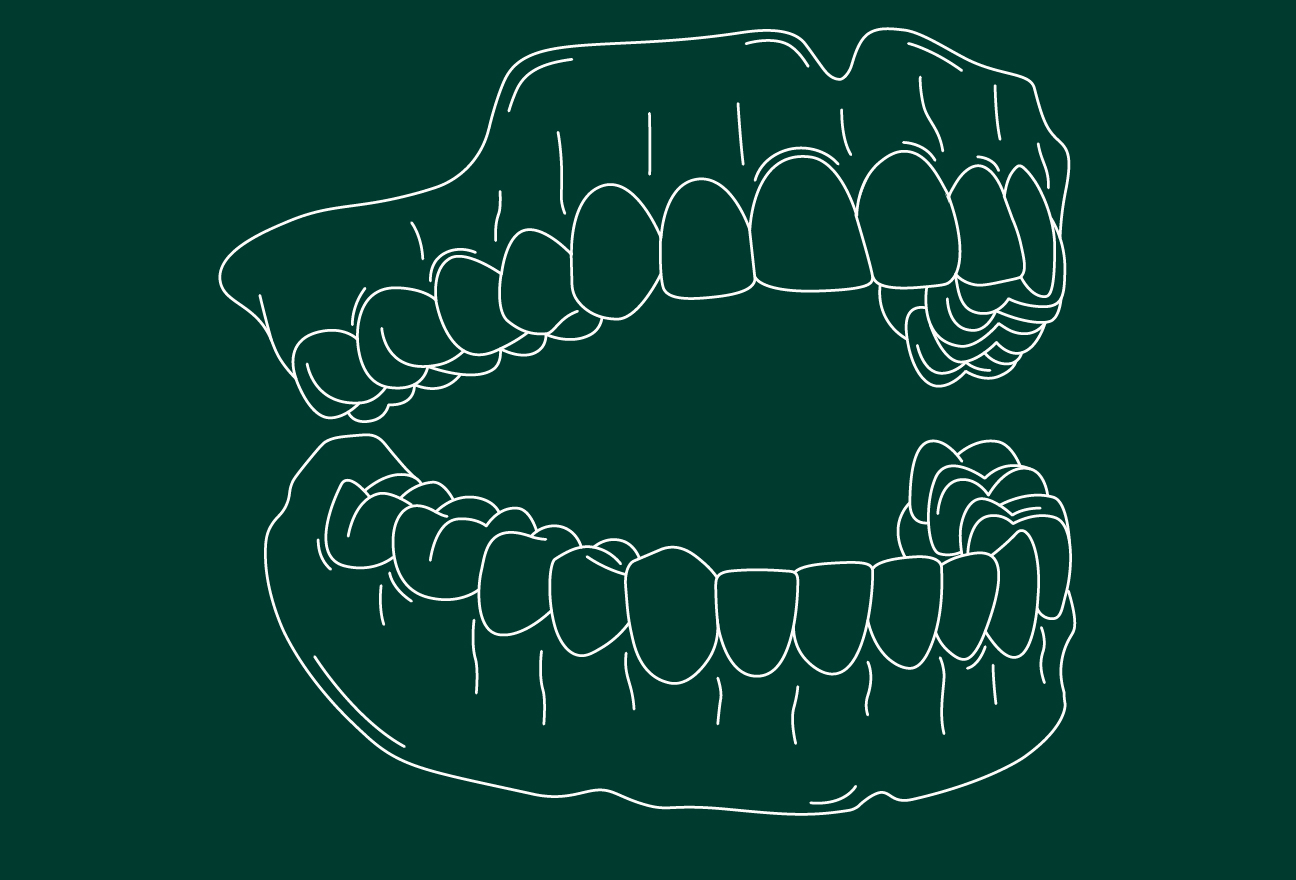
Digital dentures vs. conventional dentures.
There are two types of conventional dentures: complete or partial dentures. Partials are prostheses for individuals with missing teeth but do not require full dentures.
Partials are removable and can be used by the patient without assistance. Partials usually attach to abutting natural teeth using a precision locator attachment or metal clasp.
The ease of accessibility creates an opportunity for cleaning and maintenance. Additionally, partials require a minimum amount of tooth preparation to support the device.
A complete set of dentures are a removable prosthesis to replace natural teeth with a complete set of new teeth. Traditional dentures are labor-intensive and daunting for patients. However, in modern dentistry, dentures have evolved.
Digital denture workflow
Materials used
First, the materials used can be a differentiator. “Prosthodontic Treatment for Edentulous Patients” states, “Biocompatibility is now considered a fundamental requirement for dental restoration. It depends on the host’s condition, properties of the material, and the context in which the material is being used, namely its interaction with its environment.”
Biocompatible materials are necessary as partial and complete dentures are required to “perform more adequately for longer.” Materials should have the following characteristics:
- Minimal harmful effects on oral tissue, including non-toxic, non-irritating, non allergenic, and non carcinogenic material.
- Degradation of the material has a minimal chemical effect.
- The material must possess optimal physical properties for clinical and mechanical objectives, including hardness, elasticity, and strength. There is also wear resistance and adequate thermal coefficient of expansion and conductivity properties.
- Aesthetically acceptable properties that provide ease of fabrication, manipulation, and cleansing.
- The material must be readily available, economical to use, and allows for easy, inexpensive maintenance and repairs.
The most common denture materials used as the base, according to the International Journal of Molecular Sciences, are:
- Acrylic Resin – Sometimes called PMMA, it can be classified based on composition and the polymerization activators: heat cured, light cured, or cold cured. PMMA is the most widely used for its adjustability and comfort value. Their caveat is proper care. Without it, they lack longevity and risk of infections because of the coarse nature of the material.
- Porcelain – Porcelain is a patient favorite for traditional dentures. It has strength and durability. But it can be cost-prohibitive, and its processing demands intense heat. Still, the aesthetics and translucency of the material provide a natural appearance. As for partials, they are not as popular because porcelain can wear down the surrounding natural teeth.
- Metal Partial Dentures – This type of denture is smaller and uses a metal base. Patients find it easier to tolerate its size. They also like the color compatibility of the high-quality resin, the sensible profile, and the natural look of the composite denture teeth. Yet, this partial denture can be more costly than acrylic dentures by as much as 75 percent.
Method of production
The next variation for conventional dentures is the method of production. Traditional dentures require a lengthy process with multiple patient visits and extended adjustment time. Every additional touchpoint can lead to potential errors in production. That is why dentists are converting to digital dentistry and incorporating digital denture labs into their processing. Now, envision how 3D-printed dentures can financially impact your practice and patient.
There are many essential steps to the conventional denture design process. The core steps include the following:
- Preliminary impressions use stock trays to construct an initial fit estimate of the patient’s mouth. Once placed, it must be pushed against their teeth. Wax enhancements of the tray periphery may be needed. When the material is poured into the dental stone, a vibrator device fills voids and releases trapped air.
- Definitive impressions – Adjustments for aesthetics and fit is performed as determinants of bite, tooth layout, and gingival contours are revealed. Customized denture trays create master impressions sent to a lab for the final model.
- Establish VDO – Establishing the patient’s vertical dimension of occlusion (VDO) and bite for conventional dentures is determined by a wax tray.
- Wax-Try-in – Patients return for a wax model try-in of the dentures or partial teeth. Patients test the bite so that the dentist can confirm VDO, comfort, and alignment.
- Adjustments and delivery – After adjustments, the dentist inserts the final dentures. Depending on the patient’s needs, they may require more adjustments.
There is a more promising, streamlined approach for both dentists and patients alike—Digital Dentures. Additionally, incorporating digital workflows into the existing denture fabrication process enables more patients to be seen in a short amount of time. The key is in the training.
Good training results in quick, clean, complete scans with no dental putty in trays. Additionally, digital dentures’ cost is more accommodating to patients.
The new solution: Digital dentures in 2 Appointments
Traditional denture processing is now obsolete due to digital dentistry. Workflows are streamlined by technology and more efficient due to Dandy’s 2-Appointment model.
Digital denture appointment 1: The scan
Initial appointments will begin with an intraoral scan of the upper and lower arches. The dentist will then scan the patient’s bite through a dentition or appliance. This process creates an accurate digital model exported as a digital file to a dental laboratory.
Using CAD/CAM dentistry technology, Dandy’s expert digital denture design team will review scans and the digital file, ensuring that even the most complex Digital Denture cases fit perfectly.
Making digital dentures have never been easier. Using the most advanced 3D carbon printers, industry-leading 3D printed dentures made of Dentsply Lucitone. The other option is a solid block milled denture teeth with High Impact Acrylic bases from the Ivoclar Ivotion System, the Digital Dentures with industry-leading strength. They have scientifically proven durability. The 3D printing expedites the process.
Digital denture appointment 2: The fitting
The lab will send the dentist the final denture model about one week later. The model will likely have an optimal fit thanks to digital technology. There may be minor adjustments for a few patients. However, the lack of adjustments means reduced patient chair time.
Yes, your patient will have a brand-new smile in just two appointments.
Digital Dentures in 3 Appointments for edentulous patients
The design process of digital dentures can vary. It may require one additional appointment. The challenge with traditional dentures is the patient’s bite, not with the digital denture process.
The doctor or dental technician will perform an upper and lower scan of the edentulous arches. As with other digital dentures or prosthetics, the scan is uploaded and sent to the lab, and a wax rim will be created. Then, the lab will ship it to the dentist.
Once received, the patient must come into the dental office for the second appointment. The dentist will register the bite using the wax rim and perform a 360° scan. This scan will be digitally merged with the intraoral scan to construct a complete model.
The patient returns for the third appointment when the lab finishes the 3D printing or fabrication. The model will be inserted for a fantastic fit.
Benefits of the digital denture workflow
The pain points of the traditional denture process impact dentists and patients similarly:
- Multiple appointments
- Increased time in the chair
- Numerous touch points
- An extended wait for the finished product
Dandy’s digital process will eliminate many of the impediments of the digital workflow. The benefits of this process include:
- Fewer appointments
- Improved turnaround time
- Quick replacements
- Increased cost-effectiveness
- Greater accuracy, less human error, and reduced manual labor
The precision of intraoral scanners’ technology provides accurate and consistent final models for dental practices. They have fewer chairside adjustments, costly re-dos, or issues with shipping the physical product back and forth. Fewer touchpoints lead to less human error.
If you are considering adopting Digital Dentures at your dental practice, let Dandy help you transform into the digital age. Learn how digital dental technology workflows can improve your dental practice.
Sources
Statista. U.S. population: Do you use dentures https://www.cdc.gov/oralhealth/basics/adult-oral-health/adult_older.htm
American College of Prosthodontics. Facts & Figures. https://www.gotoapro.org/facts-figures/
Web MD. Dental Health and Dentures. https://www.webmd.com/oral-health/dental-health-dentures/
DDS Labs. The Ten Steps to Denture Fabrication https://blog.ddslab.com/the-10-steps-to-denture-fabrication
Elsevier Health Sciences. “Prosthodontic Treatment for Edentulous Patients.” https://www.amazon.com/Prosthodontic-Treatment-Edentulous-Patients-Implant-Supported-ebook/dp/B00G9UANBG/ref=tmm_kin_swatch_0?_encoding=UTF8&qid=&sr=
Journal of the history of dentistry. The Historical Evolution of Dental Impression Materials. https://pubmed.ncbi.nlm.nih.gov/28777510/
International Journal of Molecular Sciences. Modification of Polymer Based Dentures on Biological Properties: Current Update, Status, and Findings https://www.ncbi.nlm.nih.gov/pmc/articles/PMC9499318/#B30-ijms-23-10426
Spear. Conventional Complete Denture Fabrication in 9 Steps https://www.speareducation.com/spear-review/2015/10/conventional-complete-denture-fabrication-in-9-steps
Macedonian Journal of Medical Sciences. Advantages of CAD/CAM versus Conventional Complete Dentures. https://pubmed.ncbi.nlm.nih.gov/30159084/
